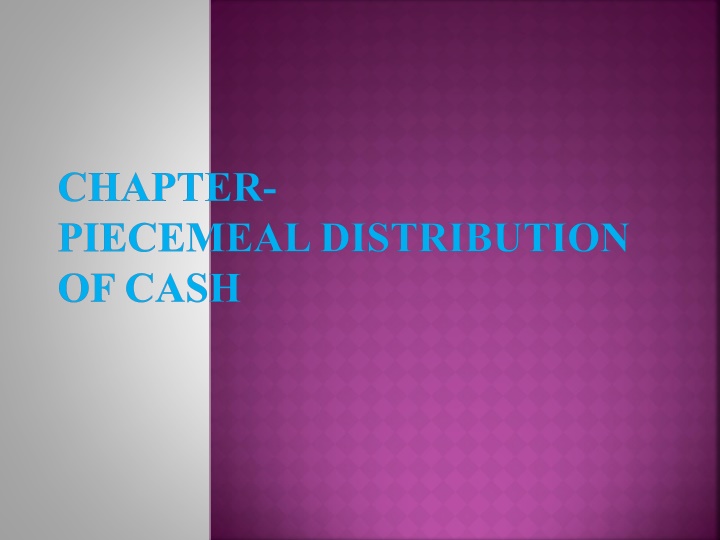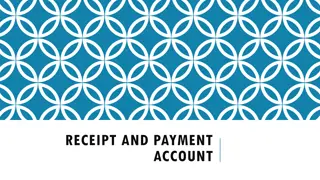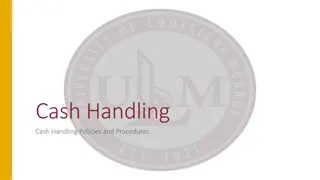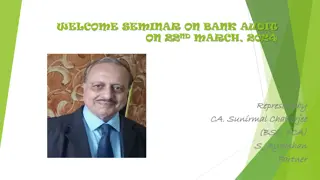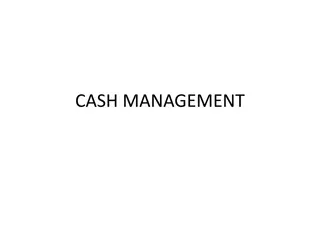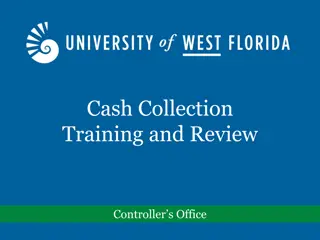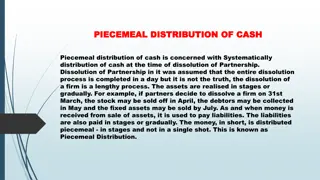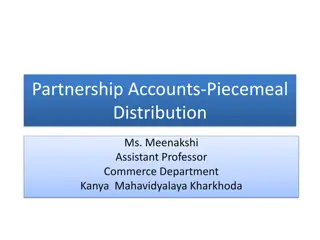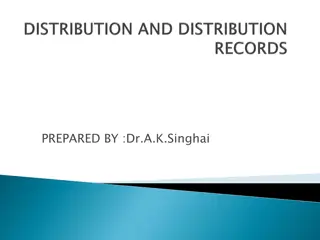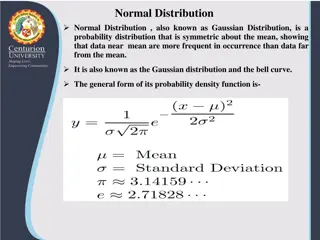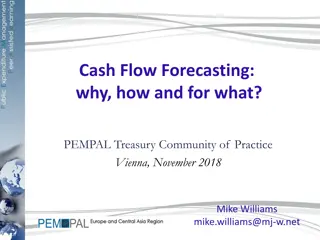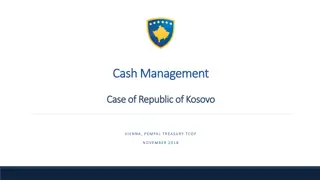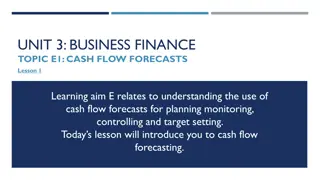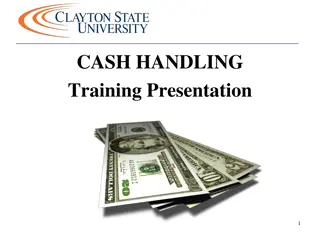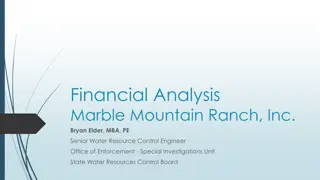CHAPTER- PIECEMEAL DISTRIBUTION OF CASH
In the process of dissolving a partnership firm, the piecemeal distribution of cash plays a crucial role. This involves selling assets gradually and using the proceeds to settle liabilities in a specific order. Learn about the practical steps and considerations involved in the dissolution process of partnership firms.
Download Presentation

Please find below an Image/Link to download the presentation.
The content on the website is provided AS IS for your information and personal use only. It may not be sold, licensed, or shared on other websites without obtaining consent from the author.If you encounter any issues during the download, it is possible that the publisher has removed the file from their server.
You are allowed to download the files provided on this website for personal or commercial use, subject to the condition that they are used lawfully. All files are the property of their respective owners.
The content on the website is provided AS IS for your information and personal use only. It may not be sold, licensed, or shared on other websites without obtaining consent from the author.
E N D
Presentation Transcript
CHAPTER- PIECEMEAL DISTRIBUTION OF CASH
PIECEMEAL DISTRIBUTION OF CASH In Dissolution of Partnership firm, it is assumed that the entire assets are realized (sold), and entire liabilities are paid off and capital are refunded to the partners. But in practical, dissolution of firm is a lengthy process. The assets are realized (sold) step by step (gradually). Example:- If partners decided to dissolve the firm on 31stMarch, the stock of firm by be sold off in month of April, the debtors may be collected in May and other fixed assets may be sold by July. As and when money received from sale of assets, it is used for payment of liabilities. In simple words, after dissolution assets are sold out and amount received from sale of assets will be used for payment of liabilities, this process is known as Piecemeal Distribution of Cash.
PIECEMEAL DISTRIBUTION OF CASH **Payment/ Settlement of Liabilities: The liabilities are paid in following orders: Provision of Realization Expanses ( if given) Payment of Unrecorded or Contingent Labilities ( Example- Discounted) Payment of Outsider Liabilities (Example- Creditors, Bills payable, Bank Loan or Loan, Bank Overdraft, Loan from any relative Partner etc. Payment of Internal Liabilities ( Example- only loan from any partner only) Refund of Partner Capital ( always as per Statement showing capital) If any surplus amount is retained in business then, distribute among the all partners in theirs profit and loss ratio. In solution always prepare 2 statements- Statement showing Excess Capital------------(Working Note) Statement showing piecemeal distribution of cash Bill of excess
PIECEMEAL DISTRIBUTION OF CASH Format of Statement showing Excess Capital Particulars 1st 2nd 3rd Partner Partner Partner Profit and Loss Ratio Capital Balance ( Credit Balance) Add- Current Account ( Credit balance) General Reserve/ any Reserve Profit and loss ( Credit balance) Less: Current Account ( Debit balance) Drawing Account Profit and loss ( Debit balance) Deferred Revenue Expenditure x x x xx xx xx + x x x x x x x x x - (x) (x) (x) (x) (x) (x) (x) (x) (x) (x) (x) (x) Adjusted Capital xxx xxx xxx PSR ( Profit and Loss Ratio) Unit Capital= Adjusted Capital x x x xx xx xx PSR Base Capital (lowest amount among Unit Capital) Proportionate Capital= BC X PSR Excess Capital =Adjusted Capital- Proportionate Capital xx xx xx xx xx xx NIL xx xx (Here any one partner left i.e. become NIL, So again repeat same steps between reaming two partners)
PIECEMEAL DISTRIBUTION OF CASH Points to remember a) If PSR is not given in questions then assume it is EQUAL. b) If Cash is insufficient to pay off liabilities, the payment is made to concerned creditors (each category) in their outstanding balance ratio. c) When a partner purchase or take over any asset, assume that he /she pays cash to the firm. d) Normally secured asset is sold first before sale of other assets and secured creditors are paid first out of sale proceeds. But if secured asset is sold after the sold after the sale of other assets, the secured creditors are entitled to be paid along with the unsecured creditors out of sales proceeds of such other assets.
PIECEMEAL DISTRIBUTION OF CASH Secured Creditors: Outside liabilities are broadly classified into 2 category i.e. secured creditors and unsecured creditors. Secured creditors are those which are secured by pledge, charge, hypothecation or mortgage of any asset. Example- Bank overdrafts are secured against machinery and stock. Secured creditors may be fully secured or partly secured In case of fully secured creditors, the amount due is fully recovered by the value of asset pledge. In simple word on dissolution the bank can fully recover the amount due on bank overdraft out of the amount realized from the machinery and stock. The reaming surplus is belongs to the firm. In case of partly secured creditors, the amount due is only partly covered the value of the assets pledge. On dissolution, bank can partly recover the amount due on bank overdraft out of amount realized form the machinery and stock. The remaining amount is treated as unsecured creditor.
PIECEMEAL DISTRIBUTION OF CASH Unsecured Creditors: Unsecured creditors have no specific security at all. Unsecured creditors are classified as Preferential Creditors and Other Creditors. Preferential Creditors: Preferential Creditors means amount due as a preference. This liability cannot be avoided by firm. Example- Amount due to Government i.e. Income Tax, Municipal tax, and Amount due to Employees i.e. Salary, Wages, Compensation on termination of services, contribution to PF etc. Other Creditors: Other unsecured creditors are all the remaining outside liabilities of the firm. These also include the balance of partly secured creditors.
THANK YOU!! Assistant Prof. Pradeep H. Tawade DEPARTMENT OF ACCOUNTANCY, NSS College of Commerce & Eco. Tardeo, Mumbai-34 Email ID pradeeptawade26@yahoo.com Mobile No. 9619491859
